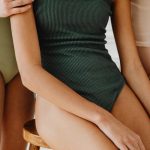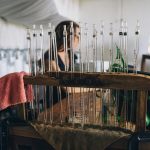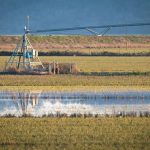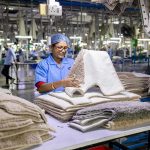Have you ever wondered how some fabrics seem to keep you feeling fresh even during intense workouts? Moisture-wicking fabrics are designed to pull sweat away from your skin, but the science behind it is fascinating. Understanding the materials and mechanisms at play can help you choose the right gear for your activities. Let’s explore what makes these textiles so effective and how they can enhance your comfort and performance.
Table of Contents
Key Takeaways
- Moisture-wicking fabrics utilize synthetic fibers like polyester and nylon to absorb and transfer sweat away from the skin.
- Capillary action in these fabrics allows moisture to move through tiny channels, promoting quick evaporation.
- The lightweight and breathable nature of moisture-wicking textiles enhances air circulation, regulating body temperature during physical activities.
- Antimicrobial treatments in some moisture-wicking fabrics help reduce odor, keeping users feeling fresh during workouts.
- These fabrics dry faster than cotton, minimizing skin irritation and preventing chafing for a more comfortable experience.
Material Composition of Moisture-Wicking Fabrics
Moisture-wicking fabrics are designed to keep you dry and comfortable, and their material composition plays a crucial role in this function.
These fabrics typically blend synthetic fibers like polyester, nylon, or spandex, which help pull moisture away from your skin. The unique structure of these fibers allows them to absorb sweat and quickly transfer it to the fabric’s surface, where it evaporates.
You’ll often find that moisture-wicking materials are lightweight and breathable, making them ideal for active wear. Some may even incorporate antimicrobial treatments to reduce odor, ensuring you feel fresh during workouts.
The Science Behind Capillary Action
While you may not realize it, capillary action is a key factor in how moisture-wicking fabrics function. This science involves the movement of moisture through tiny spaces, allowing sweat to shift away from your skin. Here’s how it works:
Capillary action plays a crucial role in moisture-wicking fabrics, enabling sweat to move away from your skin effectively.
- Material Design: Wicking fabrics are crafted with fibers that create small channels.
- Surface Tension: Water molecules stick to the fibers, allowing them to move along the channels.
- Evaporation: As moisture travels, it spreads out, increasing its surface area and evaporating faster.
- Comfort: This process keeps you feeling dry and comfortable during physical activities.
Understanding capillary action helps you appreciate how these fabrics manage moisture, keeping you fresh even when you’re working up a sweat.
Benefits of Using Moisture-Wicking Fabrics
When you choose moisture-wicking fabrics, you’re investing in comfort and performance, especially during workouts. These fabrics pull sweat away from your skin, keeping you dry and preventing chafing. This means you can focus on your fitness goals without distractions. Additionally, moisture-wicking materials often dry quickly, which is perfect for those intense sessions when you want to change and move on with your day.
Here’s a quick comparison of benefits:
| Benefit | Description | Why It Matters |
|---|---|---|
| Comfort | Reduces skin irritation | Enhances workout experience |
| Quick Drying | Dries faster than cotton | Keeps you feeling fresh |
| Breathability | Allows air circulation | Regulates body temperature |
Common Materials Used in Moisture-Wicking Textiles
Choosing the right fabric can make a significant difference in your workout experience.
Selecting the ideal fabric can greatly enhance your workout comfort and effectiveness.
Moisture-wicking textiles are crafted from specific materials designed to keep you dry and comfortable. Here are some common materials you might encounter:
- Polyester: This synthetic fiber is lightweight, durable, and excellent at wicking moisture away from your skin.
- Nylon: Known for its strength and elasticity, nylon is also great at drying quickly, making it a popular choice.
- Merino Wool: A natural fiber that regulates temperature and moisture, merino wool keeps you warm when it’s cool and cool when it’s warm.
- Spandex: Often blended with other fabrics, spandex adds stretch and flexibility, enhancing comfort during movement.
Choose wisely, and you’ll feel the difference!
Applications of Moisture-Wicking Fabrics in Daily Life
Moisture-wicking fabrics play an essential role in various aspects of daily life, not just during workouts. You’ll find these materials in athletic wear, but they’re also perfect for everyday clothing.
When you’re commuting or running errands, moisture-wicking shirts keep you comfortable by pulling sweat away from your skin. These fabrics are also great for sleepwear, ensuring you stay dry and cozy all night.
If you enjoy outdoor activities, moisture-wicking gear helps regulate your body temperature, making hikes or camping trips more enjoyable.
Even in uniforms, like those worn by healthcare professionals, moisture-wicking fabrics enhance comfort during long shifts.
Frequently Asked Questions
Can Moisture-Wicking Fabrics Be Used in Cold Weather?
Imagine wearing a warm, cozy sweater that also keeps you dry. Yes, moisture-wicking fabrics can be used in cold weather. They pull moisture away from your skin, ensuring you stay comfortable and warm during chilly conditions.
How Do I Properly Care for Moisture-Wicking Clothing?
To properly care for moisture-wicking clothing, wash them in cold water with mild detergent, avoid fabric softeners, and never use bleach. Air dry or tumble dry on low to maintain their moisture-wicking properties.
Are Moisture-Wicking Fabrics Eco-Friendly?
Moisture-wicking fabrics aren’t always eco-friendly, as many contain synthetic materials. However, some brands use recycled fibers or sustainable practices. Check labels for eco-certifications to guarantee your clothing aligns with your environmental values.
Do Moisture-Wicking Fabrics Smell After Exercise?
Moisture-wicking fabrics can trap odors from sweat, especially if they’re not properly washed. If you notice lingering smells after exercise, try washing them promptly and using a detergent designed to combat odors for best results.
Can I Wear Moisture-Wicking Fabrics for Everyday Casual Outfits?
Absolutely, you can wear moisture-wicking fabrics for everyday casual outfits! They’re comfortable, breathable, and help keep you dry, making them perfect for both workouts and relaxed outings. You’ll feel great throughout your day!
- What Are Pilling Grades in Fabrics and What Do They Mean for Durability? - June 10, 2025
- Can You Use a Razor to Remove Fabric Pilling? Is It Safe? - June 10, 2025
- What Causes Pilling on Bed Sheets and How Can I Avoid It? - June 10, 2025







